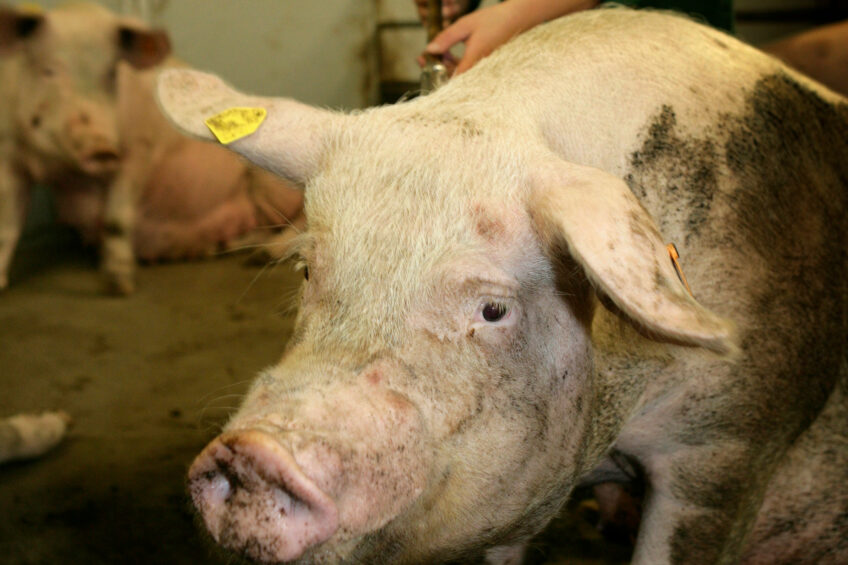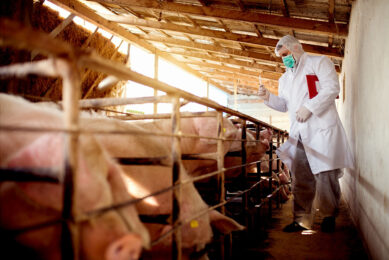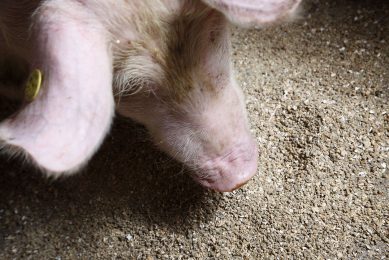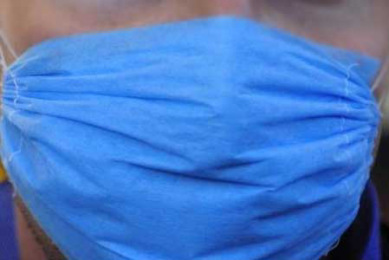A range of vaccination options to control PED virus

Vaccination is one of the most powerful methods to control and prevent Porcine Epidemic Diarrhoea (PED). Existing inactivated and live vaccines cannot always provide adequate protection against mutant PEDv strains. Novel types of vaccines, however, are being researched. This overview discusses available and future strategies.
Porcine Epidemic Diarrhoea (PED) is one of the most common viral infections in pigs leading to vomiting, diarrhoea, dehydration, anorexia and weight loss. PED outbreaks are a major health, welfare and economic concern in the swine industry around the world, and conventional vaccines are an adequate means to prevent classical PED. Due to the emergence of PED virus mutants, fsuch as in North America in 2013, conventional PED vaccines are no longer effective. Thus, the development of novel PED vaccines is of great importance. This article will discuss both conventional and novel PED vaccines available for the swine industry.
Conventional PED vaccines
Conventional vaccines, both inactivated and live, are commercially available. However, those vaccines may not provide adequate protection against current prevalent PEDv strains.
 Inactivated vaccines
Inactivated vaccines
Inactivated vaccines are produced using chemical and physical methods, such as formaldehyde or UV light to inactivate the virus. Inactivated vaccines are sufficiently safe for pigs as the virus they contain has lost its pathogenicity. These vaccines are administered to piglets and sows with an immunisation period of up to six months and protection rates of 85% and 97.06%, respectively.
The vaccines stimulate low immune response, which is why immune adjuvants such as flagellin are needed to improve the response. Cell suspension culture is another technique applied to increase the antigenic potency of vaccines.
One of the advantages of inactivated vaccines is their simple manufacturing technique; however, they cannot stimulate the host to produce mucosal immune responses that play a key role in defending against PED. In addition, multiple doses and booster injections are required to provide long-lasting immunity. As a result, development and application of PED inactivated vaccines are limited to non-emergent cases.
Currently, an inactivated PED vaccine is commercially available for the pre-farrowing vaccination of healthy pregnant sows and gilts. Pregnant sows should receive two doses, with the first dose being administered five weeks prior to farrowing and the second dose being administered two weeks prior to farrowing.
 Live vaccines
Live vaccines
Some live vaccines are generated using genetic engineering techniques that include gene mutation and recombination to reduce their virulence. Another technique is to screen for naturally occurring variants of the pathogen of interest with reduced or no virulence. In some cases, the virulence of the pathogen of interest is reduced by successive passaging on cell lines, experimental animals, or specific pathogen-free chicken embryos. This method retains viral replication and antigen producing capacities. As a result, a single dose of live vaccines induces a proper immune response.
Furthermore, live vaccines can be generated through reverse genetic techniques in which a structural amino acid in the virus is deleted to decrease virulence, while maintaining sufficient immune response stimulation capacity. Live PED vaccines produce 96% and 88% protection rate in piglets and sows, respectively, and reduce the incidence of diarrhoea in piglets from 60% to 2.13% after immunisation. An attenuated PEDv DR13 strain was approved in South Korea in 2004 and in the Philippines in 2011. It is commercially available as an oral vaccine for inducing specific immunity in late-term pregnant sows with a high level of protection against PEDv infection.
Novel PED vaccines
Novel vaccines such as nucleic acid vaccines, subunit vaccines, virus-like particle vaccines and live vector vaccines are safe, stable, inexpensive and convenient to use. In addition, these types of vaccines exhibit clear targeting and high yield; thus, overcoming some of the shortcomings of conventional vaccines.
 Nucleic acid vaccines
Nucleic acid vaccines
Nucleic acid vaccines, generated through genetic engineering methods, directly deliver pathogen genes into host cells, and induce comprehensive immune responses. Nucleic acid vaccines are categorised into mRNA vaccines and DNA vaccines which are approved for emergency use and need a booster immunisation administered at two-week intervals. The mRNA vaccines provoke robust immune responses in the immunised piglets.
The DNA vaccines are generated by recombining the PEDv gene with certain genes of different viruses, such as porcine rotavirus, to improve immune response induction in piglets. Moreover, adjuvants, such as interlukin-18, interlukin-12, or interferon- α, can be added to boost the immune effect of DNA vaccines. Although mRNA vaccines induce a higher immune response compared to DNA vaccines, they are more expensive due to stability issues and more stringent requirements related to storage and transportation.
In 2014, an mRNA vaccine was developed against PED virus, which was conditionally licensed in the United States.
 Subunit vaccines
Subunit vaccines
Subunit vaccines are genetically engineered through recombinant insertion of virus genes into viral vectors. In that process, the viral vectors are introduced into bacteria, yeast or animal cells and then coupled with an adjuvant, such as flagellin, to achieve higher immune efficacy.
Subunit vaccines are inexpensive with a high level of safety and are of clear antigenic composition. In pregnant sows, subunit vaccines are administered intramuscularly with one or two subsequent booster immunisations at two-week intervals.
In addition, these vaccines induce high concentrations of neutralising antibodies in piglets. Subunit vaccines are associated with significant disadvantages, such as unsatisfactory immune response induction and vaccine efficacy; therefore, those vaccines generally require a proper immune adjuvant. These vaccines are still under further research and no commercial vaccines are available at the moment.
 Virus-like particle vaccines
Virus-like particle vaccines
Virus-like particle vaccines are generated using non-genetic viral particles self-assembled in living or cell-free expression systems. These vaccines maintain the natural conformation of viral particles and, while safe, they trigger potent immune responses. PED virus-like particle vaccines are administered intramuscularly and increase the immunoglobulin content in sow milk, reduce gut lesions in sows as well as PED symptoms and mortality rate in piglets.
Various factors, including viral proteins and immune adjuvant, affect the immune potency of these vaccines. In addition, developing a vaccine using fusion proteins of all genotypes of a virus ensures higher immune potency and global efficacy. These vaccines are still under further research and no commercial vaccines are available at the moment.
 Live vector vaccines
Live vector vaccines
Live vector vaccines are produced by recombining viral proteins into the genome of an avirulent or attenuated virus. These vaccines stimulate antigen proteins synthesis and host immunity to prevent and control infectious diseases. An advantage of live vector vaccines is creating a shot against multiple diseases by inserting several viral genes into the live vector.
In addition, these vaccines provide high immune efficacy and safety levels, and are available at low cost. Live vector vaccines are divided into live viral vector vaccines and live bacterial vector vaccines. Currently, adenovirus, parapox virus, poxvirus, baculovirus and vesicular stomatitis virus are used to generate live viral vector PED vaccines.
Side effects associated with live viral vector vaccines includes continued replication and infection of vectors, potential changes in virulence and immunity effects after the insertion of foreign antigen genes. Live bacterial vector PED vaccines are developed using Lactobacillus and Bacillus subtilis as their main bacterial vectors. These vaccines are easy to cultivate, have a large gene capacity and strongly stimulate immune response. These vaccines are still under further research and no commercial vaccines are available at the moment.











